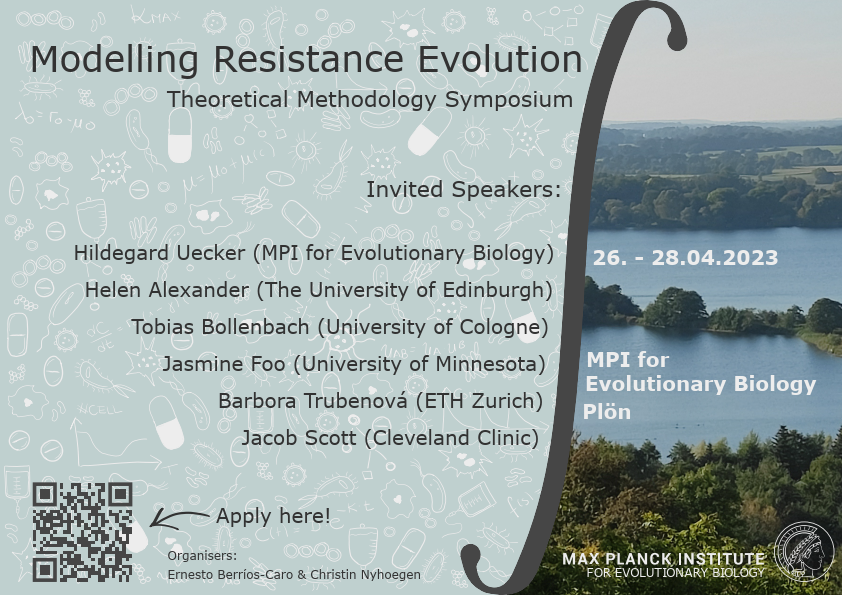Speaker
Description
Recent experiments on the evolution of drug resistance in bacteria have identified a transition from the preferred substitution of high-rate, low-effect mutations to low-rate, high-effect mutations with increasing population size [1]. The greater mutation supply in large populations increases the probability for rare high-effect mutations to arise, which subsequently outcompete the more frequent low-effect mutations through intensified clonal interference. In this way, the balance between mutation bias and selective differences in their effects on mutation choice is increasingly skewed in favor of selection in large populations. A minimal setting in which the interplay between mutation bias, selection and population size can be quantified is provided by the Yampolsky-Stoltzfus model, which considers the competitive fixation of two mutations, one of which is favored by mutation bias and the other by selection [2]. Using a suite of approximations based on a detailed analysis of the fixation process, we derive accurate expressions for the relative fixation probability of the two mutations that cover all adaptive regimes of interest. This allows us to precisely pinpoint the critical population size beyond which mutation bias is superseded by selection for any choice of mutation rates and selection coefficients. [1] M.F. Schenk et al., Population size mediates the contribution of high-rate and large-benefit mutations to parallel evolution. Nature Ecology & Evolution 6:439-447 (2022) [2] L.V. Yampolsky and A. Stoltzfus, Bias in the introduction of variation as an orienting factor in evolution. Evolution & Development 3:73-83 (2001)

